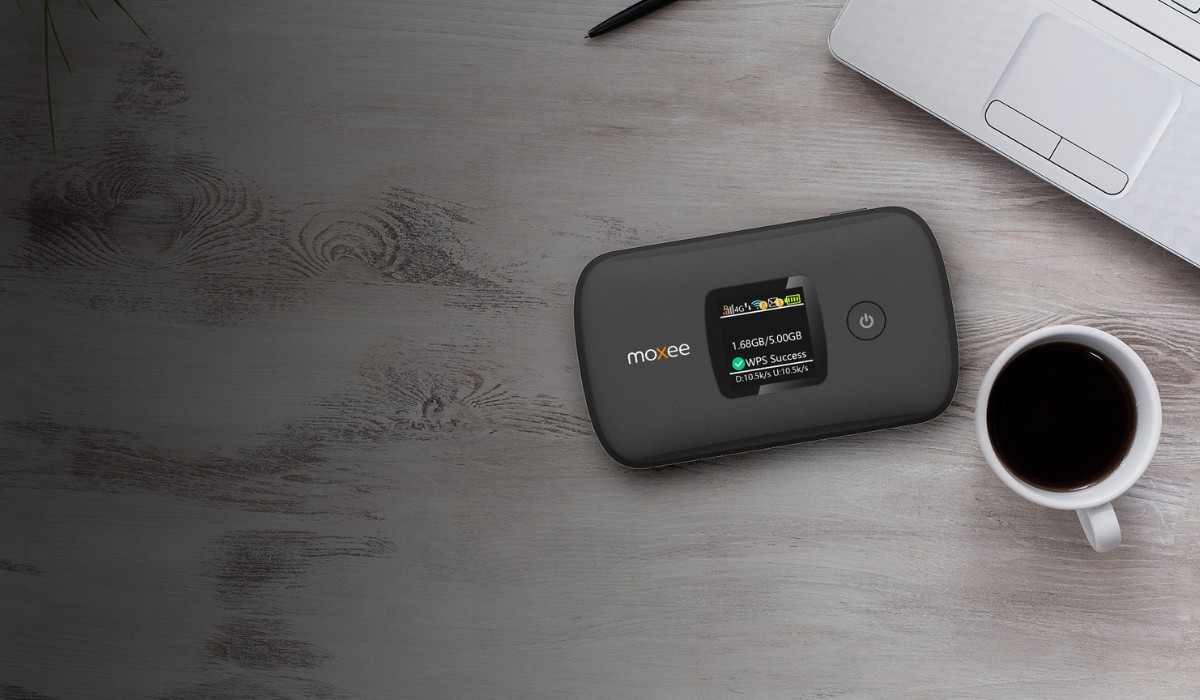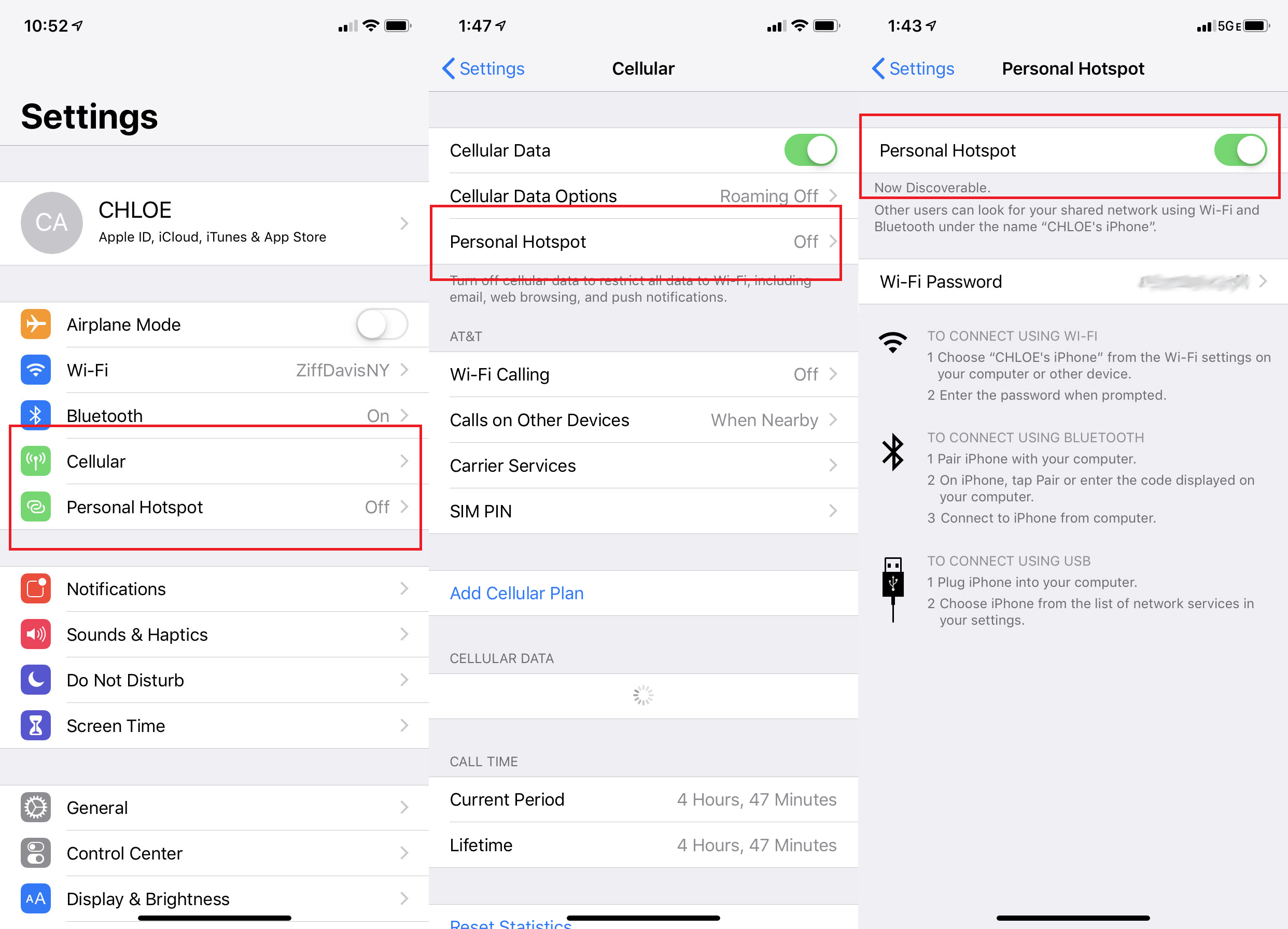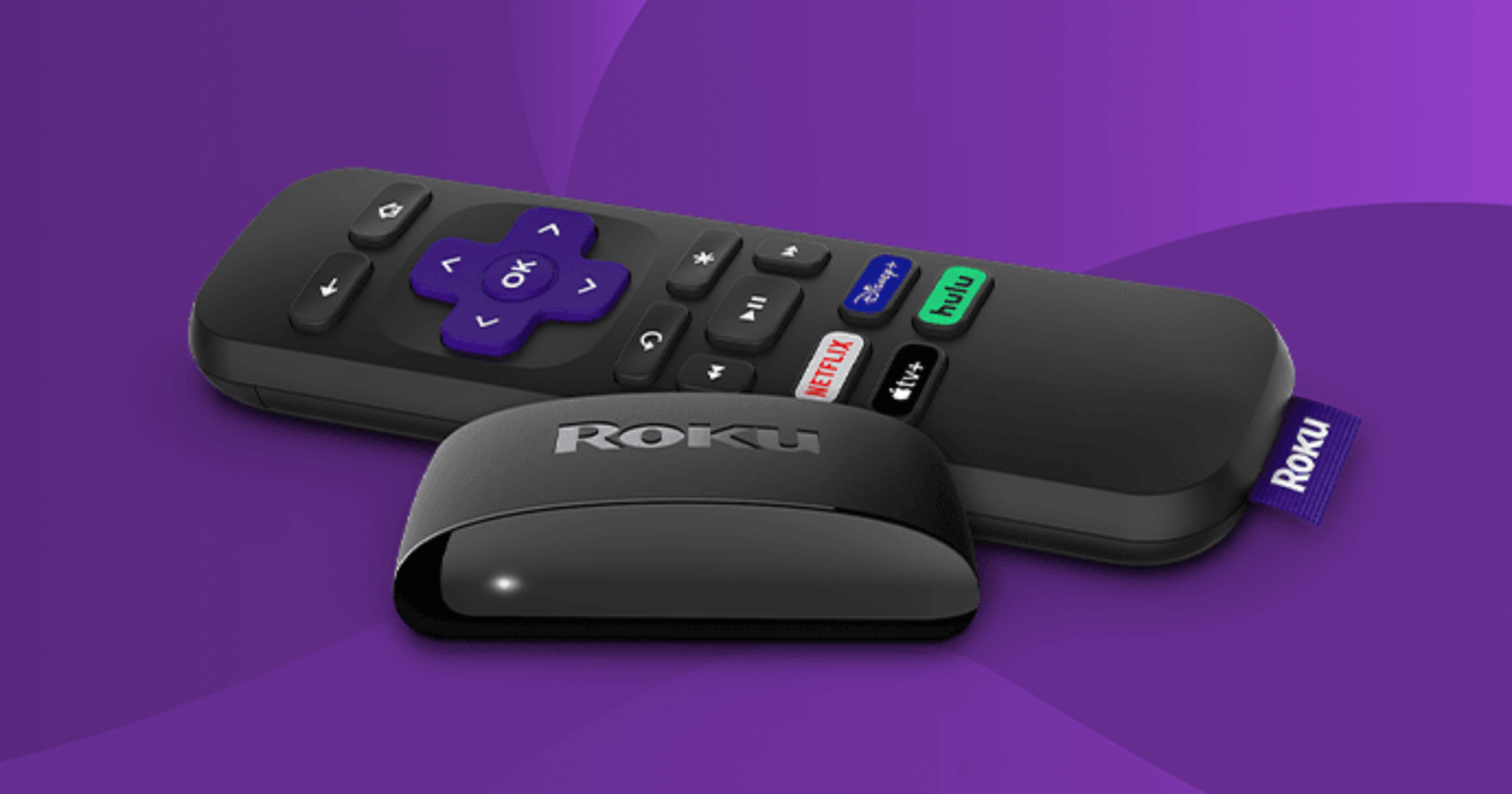Introduction
Experiencing connectivity issues with your computer's hotspot can be frustrating, especially when you rely on it for internet access. Whether you're working remotely, streaming your favorite shows, or simply browsing the web, a stable and reliable hotspot connection is essential. However, encountering disruptions such as intermittent disconnections or slow speeds can hinder your productivity and overall online experience.
In this comprehensive guide, we will delve into troubleshooting methods to address common hotspot connection issues on your computer. By implementing the following fixes, you can potentially resolve connectivity issues and restore seamless internet access. From checking network settings to updating network drivers and identifying potential interference, we will cover various strategies to help you regain a stable and consistent hotspot connection.
Understanding the intricacies of hotspot connectivity and knowing how to troubleshoot issues effectively can empower you to overcome technical challenges with confidence. By following the step-by-step solutions outlined in this guide, you can gain valuable insights into diagnosing and resolving hotspot connection issues, ultimately enhancing your overall computing experience.
Now, let's embark on this troubleshooting journey to unravel the complexities of hotspot connectivity and equip ourselves with the knowledge and strategies needed to address these issues head-on. Whether you're a seasoned tech enthusiast or a novice user, this guide aims to provide actionable solutions that are accessible and easy to implement, ensuring that you can enjoy uninterrupted internet connectivity on your computer's hotspot.
Check Network Settings
When encountering hotspot connection issues on your computer, the first step in troubleshooting involves checking the network settings. This fundamental yet crucial process allows you to assess the configuration and ensure that the settings align with the requirements for establishing a stable connection.
Verify Hotspot Configuration
Begin by verifying the hotspot configuration settings on your computer. Access the network settings and confirm that the hotspot is configured correctly. Check the network name (SSID) and password to ensure that they match the details provided by the hotspot provider or the device sharing the internet connection. Any discrepancies in the configuration can lead to connectivity issues, so it's essential to validate the accuracy of these settings.
Signal Strength Assessment
Assess the signal strength of the hotspot connection. A weak signal can result in intermittent connectivity or slow internet speeds. Ensure that your computer is within a reasonable range of the hotspot source to receive a strong and stable signal. If the signal strength is inadequate, consider adjusting the positioning of the hotspot device or your computer to optimize the signal reception.
Network Protocol Compatibility
Check the network protocol compatibility between your computer and the hotspot. Verify that the network protocol used by the hotspot (e.g., 802.11ac, 802.11n) is supported by your computer's wireless adapter. Incompatibility between the network protocols can lead to connectivity issues, so it's essential to ensure that your computer's wireless adapter is capable of communicating with the hotspot using the same protocol.
Firewall and Security Settings
Inspect the firewall and security settings on your computer. Sometimes, overly restrictive firewall settings or stringent security configurations can impede the establishment of a connection with the hotspot. Temporarily disable the firewall or adjust the security settings to determine if they are causing the connectivity issues. However, exercise caution when modifying security settings to avoid compromising the overall security of your computer.
Network Adapter Status
Check the status of your computer's network adapter. Ensure that the network adapter is enabled and functioning properly. If the adapter is disabled or experiencing issues, it can disrupt the connection to the hotspot. Troubleshoot any network adapter problems by updating the driver software and performing diagnostic tests to identify and resolve potential hardware or software-related issues.
By meticulously examining and verifying the network settings on your computer, you can lay a solid foundation for diagnosing and addressing hotspot connection issues. This proactive approach enables you to identify potential configuration discrepancies, signal strength limitations, protocol compatibility issues, and network adapter anomalies that may be contributing to the connectivity issues. With a thorough understanding of the network settings, you can proceed to implement targeted solutions to restore a stable and reliable hotspot connection on your computer.
Restart Hotspot
Restarting the hotspot device is a straightforward yet effective troubleshooting strategy to address connectivity issues on your computer. By initiating a restart, you can potentially resolve underlying technical glitches and restore the functionality of the hotspot, thereby facilitating a stable and reliable internet connection.
To commence the restart process, begin by locating the hotspot device and accessing its power source. Depending on the type of hotspot device, you may need to unplug it from the power outlet or utilize a dedicated power button to initiate the restart. Once the hotspot is powered off, allow a brief interval before powering it back on to ensure a complete reset of the device's internal components.
The act of restarting the hotspot serves to clear any temporary system errors or inconsistencies that may be impeding its performance. It effectively resets the device to a stable state, allowing it to reestablish connections with your computer and other connected devices. This simple yet impactful action can often alleviate connectivity issues such as intermittent disconnections, slow speeds, or unresponsive behavior exhibited by the hotspot.
Following the restart, monitor the hotspot device as it powers back on and initializes its network functionality. Pay attention to any indicator lights or display messages that may provide insights into the device's status. Once the hotspot has successfully restarted, attempt to reconnect your computer to the hotspot network and assess whether the connectivity issues have been resolved.
In some cases, a simple restart can rectify transient network issues and restore seamless connectivity between the hotspot device and your computer. However, if the connectivity problems persist despite restarting the hotspot, it may be necessary to explore additional troubleshooting measures to address underlying technical issues.
By proactively restarting the hotspot device, you can leverage a fundamental yet impactful solution to troubleshoot connectivity issues on your computer. This proactive approach empowers you to swiftly address potential technical hiccups and restore the functionality of the hotspot, ultimately ensuring a seamless and uninterrupted internet connection for your computing needs.
Update Network Drivers
Updating network drivers is a pivotal step in troubleshooting hotspot connection issues on your computer. Network drivers serve as the essential communication interface between your computer's operating system and its network hardware, including the wireless adapter responsible for connecting to the hotspot. Outdated or incompatible network drivers can significantly impact the stability and performance of your computer's network connectivity, potentially leading to connectivity issues and suboptimal hotspot functionality.
Commencing the process of updating network drivers involves navigating to the Device Manager on your computer. Access the Device Manager by right-clicking on the Start menu and selecting "Device Manager" from the contextual menu. Within the Device Manager interface, locate the "Network adapters" category and expand it to reveal the list of network devices installed on your computer.
Identify the network adapter that corresponds to your computer's wireless connectivity, typically denoted by names such as "Wireless Network Adapter" or the specific model of the wireless hardware. Right-click on the network adapter and select the "Update driver" option from the context menu. At this juncture, you have the choice to either search for updated driver software automatically or browse your computer for driver software.
Opting to search for updated driver software automatically initiates a process where your computer connects to the internet to search for the latest driver updates for the selected network adapter. If updated drivers are available, they will be downloaded and installed on your computer, replacing the existing drivers with the updated versions. Alternatively, choosing to browse your computer for driver software allows you to manually select and install previously downloaded driver updates, providing greater control over the update process.
Upon successfully updating the network drivers, it is advisable to restart your computer to ensure that the changes take effect. Restarting the computer facilitates the seamless integration of the updated network drivers into the operating system, enabling the enhanced functionality and compatibility required to establish a stable connection to the hotspot.
By proactively updating the network drivers on your computer, you can leverage the latest software enhancements and compatibility improvements provided by the hardware manufacturers. This proactive approach enables you to address potential driver-related issues that may be impeding the hotspot connectivity, ultimately fostering a more reliable and efficient network connection for your computing endeavors.
Disable and Re-enable Hotspot
Disabling and re-enabling the hotspot on your computer is a strategic troubleshooting approach that can effectively address connectivity issues and restore the functionality of the wireless network. This method leverages the inherent capability of the computer's operating system to reset the network interface associated with the hotspot, potentially resolving transient technical anomalies that may be hindering the establishment of a stable connection.
To initiate the process of disabling and re-enabling the hotspot, navigate to the network settings on your computer. Depending on the operating system, this can typically be accessed through the network icon in the system tray or the network settings menu within the control panel. Locate the hotspot connection within the list of available networks and right-click on it to reveal the contextual menu. From the menu options, select the "Disable" or "Disconnect" option to deactivate the hotspot connection.
Once the hotspot connection has been disabled, allow a brief interval to ensure that the network interface undergoes a complete reset. This temporary deactivation effectively clears any existing network configurations and initiates a clean state for the subsequent re-enabling process. After a short pause, right-click on the hotspot connection once again and select the "Enable" or "Connect" option from the contextual menu to re-establish the connection.
The act of re-enabling the hotspot triggers the computer to reinitialize the network interface and attempt to establish a fresh connection to the hotspot. This process allows the computer to renegotiate the network parameters and re-establish communication with the hotspot device, potentially rectifying any underlying connectivity issues that may have been present prior to the reset.
Upon re-enabling the hotspot, monitor the network connectivity indicators on your computer to ascertain whether the re-establishment of the connection has been successful. Pay attention to any error messages or notifications that may provide insights into the status of the hotspot connection. Attempt to access the internet and perform basic network-dependent tasks to verify the stability and functionality of the re-enabled hotspot connection.
By systematically disabling and re-enabling the hotspot on your computer, you can harness the power of network interface resets to troubleshoot and potentially resolve connectivity issues. This proactive approach leverages the inherent capabilities of the operating system to initiate a clean slate for the hotspot connection, enabling the potential resolution of transient technical inconsistencies and fostering a more reliable and stable wireless network connection for your computing needs.
Reset Network Settings
Resetting the network settings on your computer is a pivotal troubleshooting step that can effectively address persistent hotspot connectivity issues. This method involves restoring the network configurations to their default state, thereby eliminating potential inconsistencies or misconfigurations that may be impeding the establishment of a stable connection to the hotspot.
To initiate the process of resetting the network settings, access the network settings menu on your computer. Depending on the operating system, this can typically be achieved through the control panel or the network settings interface accessible from the system tray. Within the network settings, locate the option to reset or restore the network configurations to their original state.
Upon selecting the option to reset the network settings, the computer undergoes a comprehensive reset of all network-related configurations, including wireless connections, network protocols, and communication parameters. This reset effectively clears any lingering network configurations that may be contributing to the connectivity issues experienced with the hotspot.
After the network settings reset is initiated, it is advisable to restart the computer to ensure that the changes take effect. The restart process facilitates the seamless integration of the reset network configurations into the operating system, allowing the computer to establish a fresh network environment upon reboot.
Following the restart, navigate to the network settings to reconfigure the wireless connection to the hotspot. Ensure that the network name (SSID) and password are accurately entered to facilitate a successful connection. Additionally, verify the network protocol compatibility and security settings to align with the requirements of the hotspot device.
By resetting the network settings, you effectively eliminate potential network configuration discrepancies or misconfigurations that may have been hindering the hotspot connectivity. This proactive approach enables the establishment of a clean network environment, free from lingering inconsistencies or outdated parameters that could impede the stability and functionality of the wireless connection.
By systematically resetting the network settings and reconfiguring the wireless connection to the hotspot, you can leverage a fundamental troubleshooting strategy to address persistent connectivity issues. This proactive approach empowers you to establish a fresh network environment, potentially resolving underlying technical anomalies and fostering a more reliable and stable wireless connection for your computing endeavors.
Check for Interference
When troubleshooting hotspot connection issues on your computer, it is crucial to consider the potential impact of interference on wireless network performance. Interference can manifest in various forms, including signal overlap from neighboring wireless networks, physical obstructions, electronic devices, and environmental factors. Identifying and mitigating sources of interference is essential to ensure a stable and reliable connection to the hotspot.
Assess Signal Congestion
Begin by assessing the presence of signal congestion in the vicinity of your computer. Utilize network scanning tools or built-in features on your computer to identify neighboring wireless networks operating on the same or overlapping channels. Signal congestion from multiple networks can lead to interference and degrade the performance of your hotspot connection. If signal congestion is detected, consider adjusting your hotspot's channel settings to operate on a less congested frequency band, thereby minimizing the impact of signal overlap.
Mitigate Physical Obstructions
Physical obstructions within the vicinity of your computer and the hotspot device can impede the propagation of wireless signals, leading to connectivity issues. Evaluate the positioning of the hotspot device and your computer to minimize potential obstructions such as walls, furniture, and large objects that may obstruct the wireless signal path. Consider relocating the hotspot device to a more centralized and unobstructed location to optimize signal coverage and mitigate the impact of physical obstructions.
Identify Electronic Interference
Electronic devices operating in close proximity to the hotspot and your computer can introduce electromagnetic interference, potentially disrupting wireless communication. Common sources of electronic interference include microwave ovens, cordless phones, Bluetooth devices, and other wireless peripherals. Minimize the proximity of such devices to the hotspot and your computer to reduce the likelihood of electromagnetic interference affecting the wireless network performance.
Consider Environmental Factors
Environmental factors, such as radio frequency interference from nearby industrial equipment, power lines, and electronic appliances, can also contribute to connectivity issues. Evaluate the immediate surroundings of your computer and the hotspot device for potential sources of environmental interference. If possible, reposition the hotspot device or your computer to minimize exposure to environmental factors that may introduce interference.
By systematically assessing and mitigating potential sources of interference, you can proactively enhance the stability and performance of your hotspot connection. This comprehensive approach empowers you to identify and address external factors that may impede wireless network functionality, ultimately fostering a more resilient and dependable connection to the hotspot for your computing needs.
Contact Service Provider
If persistent hotspot connectivity issues persist despite implementing the aforementioned troubleshooting measures, reaching out to your service provider can provide valuable insights and assistance in resolving the underlying technical challenges. Your service provider possesses the expertise and resources to diagnose and address network-related issues that may be impacting the functionality of the hotspot connection.
Initiating contact with your service provider involves reaching out to their customer support channels, which may include phone support, online chat, or email communication. When engaging with the service provider's support team, it is essential to provide detailed information regarding the specific connectivity issues experienced with the hotspot. This includes describing the nature of the problems, such as intermittent disconnections, slow speeds, or complete unavailability of the hotspot network.
During the interaction with the service provider's support team, it is beneficial to inquire about any known network outages or maintenance activities that may be affecting the hotspot service in your area. Additionally, seek guidance on potential configuration settings or updates that may be required to optimize the compatibility and performance of the hotspot connection with your computer.
The service provider's support team can also facilitate diagnostic checks to assess the health of the hotspot service and identify any network-related anomalies that may be contributing to the connectivity issues. This may involve performing remote diagnostics on the hotspot device, conducting line tests, or analyzing network logs to pinpoint the root cause of the connectivity issues.
Furthermore, the service provider's support team can offer guidance on optimizing the placement and configuration of the hotspot device to maximize signal coverage and minimize potential interference. They may provide recommendations for adjusting network settings, updating firmware, or implementing specific network configurations tailored to enhance the compatibility and stability of the hotspot connection with your computer.
By engaging with your service provider's support resources, you can leverage their expertise and technical insights to collaboratively address the hotspot connectivity issues. This proactive approach enables you to tap into specialized knowledge and support services, ultimately fostering a more informed and targeted resolution to the technical challenges impacting the hotspot connection on your computer.
In summary, contacting your service provider represents a strategic avenue for seeking personalized assistance and leveraging specialized expertise to diagnose and address persistent hotspot connectivity issues. By collaborating with the service provider's support team, you can gain valuable insights and guidance tailored to optimize the functionality and reliability of the hotspot connection, ultimately ensuring a seamless and dependable wireless network experience for your computing endeavors.

























